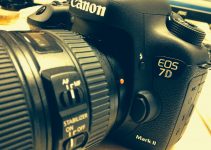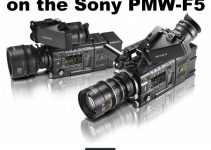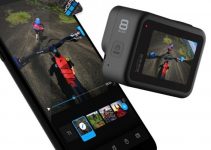You may have heard the news: there’s a new player in the action-cam field. It has been fifteen years since the first GoPros hit the market, and that was a huge revolution. No one had that kind of video quality in such a compact and portable enclosure, and that was paired with extreme durability and affordable cost.
Since then, the action and sports field has been packed with competitors. We’ve seen many brands launching their own take on the action cam concept, none had fortune though. Kodak, Nikon, Sony, Xiaomi and then countless Chinese copycats, there has been a flood of devices on the market, and GoPro took a big hit as a consequence. The latest one to enter the ring is DJI with their recently presented Osmo Action.
Riding a wave of successful products, DJI is launching in this well populated and competitive arena, but will it hold against the latest HERO7? Let’s try to find out the answer with Dave Altizer from Kinotika.
As seen in the video, the cameras are placed on a small arm to have a comparable frame and are equipped with a couple of ND filters from PolarPro since most of the shots are taken outdoors in a sunny day.
The first thing we expect from an action cam is to be light and easily wearable. The Osmo Action hits the mark flawlessly, having a size and weight easily comparable to those of the GoPro.
The second thing we bet everyone wants from such a camera is a nice in-camera stabilization. The RockSteady option, as it’s called in the Osmo menu, is quite solid. The stabilization is very good and holds exceptionally well against the HERO7.
There is a small quirk that can be very annoying, though: when entering the stabilized mode there is a sensible delay between the action happening and being recorded and the display on the back. It’s quite a lot, so much in fact, that it could be really a big con if you rely on the small monitor for framing.
That being said, the image quality on both cameras is quite good, but truth be told, it seems that the Osmo Action has the upper hand. The images look more natural and way less off. Considering the size of the sensor the image is astounding on both cameras, but the color seems to be better on the Action, and a little sharper too.
The only downside is the little crop that happens when you activate the Rocksteady mode, the frame will result in a slightly smaller image. Meanwhile, DJI loses its advantage on battery life: when tested in continuous recording the GoPro held the shooting going for about 7 minutes after the Osmo was completely dead.
If you are a vlogger, you will have no problems in choosing the right camera for you. The Osmo Action adds a feature that surely we’ll see on most action cams from now on, and that’s a small color front-facing screen that makes easy framing the shot when taking a selfie.
As it may be true that the optics on this cameras are so wide that’s quite impossible to miss the shot, it’s also true that having the ability to frame the image exactly as you wish is a huge plus.
So in conclusion, both these camera are great tools for those of you who crave that adrenaline action shot, or those who simply need a lightweight and compact camera to place in a tricky spot.
It’s hard to say if the name and reputation of GoPro will keep up with the image quality and innovation of the Osmo Action. What we can say with no doubt is that there is already a vicious marketing fight between the two.
[source: Kinotika]
Order Links:
GoPro HERO7 Black (B&H, Amazon)
DJI Osmo Action 4K Camera (B&H, Amazon)
Disclaimer: As an Amazon Associate partner and participant in B&H and Adorama Affiliate programmes, we earn a small comission from each purchase made through the affiliate links listed above at no additional cost to you.




